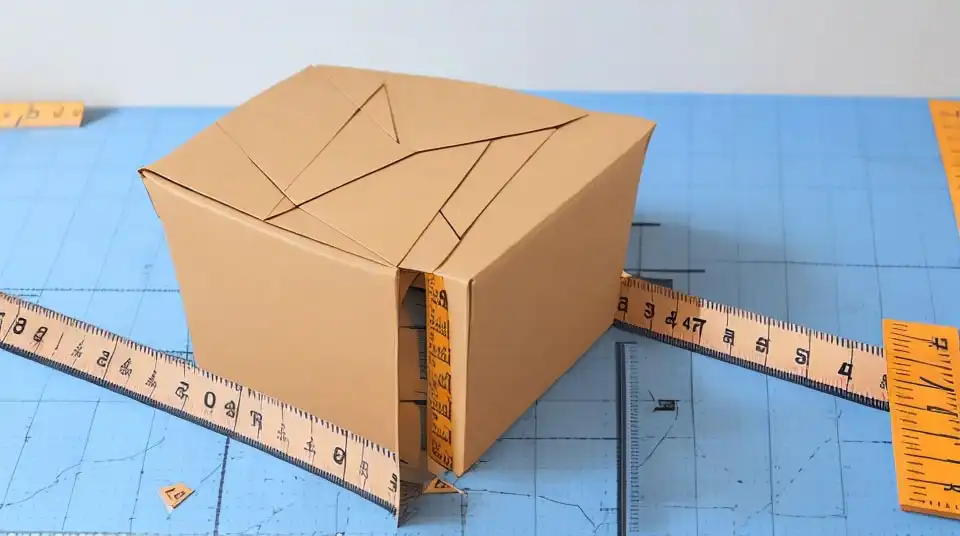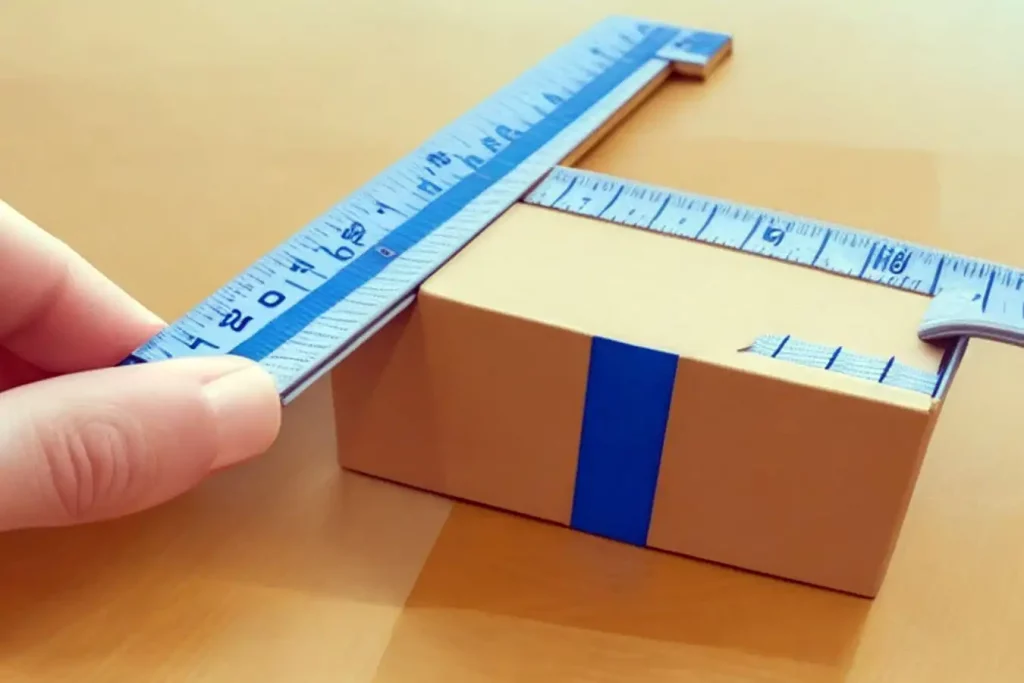Hello there! I’m Ovi Tanchangya, your friendly guide to understanding measurements in an intuitive and engaging manner. In this article, we’re going to dive into a common volume measurement we often encounter, yet might not fully grasp: the cubic foot. We’ll discuss what it is, why it’s used, and the real-world implications of a measurement that’s equivalent to 5 cubic feet. Let’s get started on this exciting journey into the world of spatial measurements.
Understanding Measurements
Before we plunge into the specifics of what 5 cubic feet looks like, let’s ensure we’re all on the same page about some basic principles of measurements.
What is a Cubic Foot?
A cubic foot is a unit of volume used in the imperial and U.S. customary measurement systems. It might seem abstract, but consider it as a cube that’s one foot long on each side. Now, imagine filling that cube with water, sand, or even your favorite cereal – that’s one cubic foot.
Conversion of Cubic Feet to Other Measurements
To get a better idea of what a cubic foot represents, let’s look at its equivalent in other measurements.
Cubic Feet to Cubic Inches
The cubic inch is a smaller unit of volume. Think of it as a cube that measures one inch on all sides. If you filled a one-foot cube with one-inch cubes, you’d need 1,728 of them (since one foot equals 12 inches, and 121212 equals 1,728). So, 1 cubic foot is equivalent to 1,728 cubic inches.
Cubic Feet to Cubic Yards
At the other end of the spectrum is the cubic yard. This is a larger unit, equivalent to a cube that measures one yard (three feet) on each side. To fill this one-yard cube with one-foot cubes, you’d need 27 of them (333 equals 27). Therefore, 1 cubic foot is about 0.037 cubic yards.
Cubic Feet to Liters
Outside the U.S., the liter is a common unit of volume, used in the metric system. If you’re filling your one-foot cube with liter bottles of water, you’d need approximately 28.3 of them. So, 1 cubic foot equals roughly 28.3 liters.
By now, you should have a decent idea of what we’re talking about when we refer to a cubic foot. But how big is 5 cubic feet? Let’s explore this next.
Let’s create a conversion table for 5 cubic feet into different units of measurement.
| Measurement Unit | Conversion Factor | Size of 5 Cubic Feet |
| Cubic Inches | 1,728 | 8,640 |
| Cubic Yards | 0.037 | 0.185 |
| Liters | 28.316 | 141.58 |
| Gallons (US) | 7.4805 | 37.40 |
| Cubic Meters | 0.028 | 0.142 |
This table should provide you with a comprehensive view of how big 5 cubic feet is when converted to other common units of volume.
Read more: How Much is 3L of Water
Visualizing the Size of a Cubic Foot
To further our understanding of cubic feet, let’s bring this concept into the tangible world. By examining everyday items and creating our own visual model, we can really get to grips with the size of a cubic foot.
Real-World Examples of a Cubic Foot
A cubic foot, while being a fairly standard unit of measurement, might seem abstract at first glance. To make this more concrete, let’s consider some everyday items with a volume of approximately one cubic foot.
Think of a basketball. It’s not a perfect cube, of course, but if you had a box large enough to snugly fit a basketball, that box’s volume would be just over one cubic foot. Or consider a standard kitchen blender – it too occupies a space roughly equivalent to one cubic foot.

Creating a Visual Model of a Cubic Foot
To create a physical model of a cubic foot, follow these steps:
- Find a ruler or measuring tape.
- Cut out three pieces of cardboard, each one foot square.
- Arrange two of the squares in an L shape, then tape them together.
- Add the third square to complete the cube, and tape it in place.
You now have a physical model of a cubic foot!
Determining the Size of 5 Cubic Feet
Now that we’ve grasped the size of a cubic foot, let’s extend that understanding to a larger volume – specifically, five cubic feet.
Mathematical Calculation of 5 Cubic Feet
Mathematically, if you wanted a perfect cube that held exactly 5 cubic feet, each side would measure the cube root of 5 feet, or approximately 1.71 feet.
However, in the real world, most items or spaces that hold 5 cubic feet aren’t perfect cubes. Instead, they’re usually rectangular prisms, where the height, width, and length aren’t the same. For example, a chest freezer might measure 2 feet by 2.5 feet by 1 foot, giving a volume of 5 cubic feet.
Real-World Examples of 5 Cubic Feet
To visualize 5 cubic feet, let’s turn again to familiar objects. A standard dishwasher has a volume of about 5 cubic feet. In the shipping world, a medium-sized moving box that measures roughly 18” x 18” x 27” holds about 5 cubic feet of space.
Remember, the dimensions of these objects aren’t equivalent, but when you multiply the length, width, and height together, you get a volume close to 5 cubic feet.
These examples should help make the concept of 5 cubic feet more tangible and less like an abstract mathematical figure. As with anything new, the more you practice visualizing these volumes, the more instinctive your understanding will become.
Practical Applications of a 5 Cubic Feet Measurement
Now that we’ve got a firm grasp on the concept of 5 cubic feet, let’s explore some situations where this understanding could come in handy.
Storage: Suppose you’re trying to organize your garage, and you’re looking at storage bins. Knowing the volume of the items you need to store will help you select the right size bin.
Shipping : If you’re packing a box to ship items, understanding cubic feet will help you choose the most cost-effective box size, as shipping costs often depend on the volume of the box.
Appliance Capacity: When purchasing a new refrigerator, dishwasher, or clothes dryer, manufacturers often list their capacity in cubic feet. Understanding this unit of measurement allows you to make an informed decision about which appliance will meet your needs.
Gardening: When purchasing soil, compost, or mulch for your garden, these materials are often sold by the cubic foot. Knowing how much you need can save you money and prevent waste.
Moving: When renting a moving truck, companies often list the truck’s capacity in cubic feet. Knowing the volume of your belongings can help you choose the right size truck.
FAQs
What are the dimensions of 5 cubic feet?
For a perfect cube of 5 cubic feet, each side measures roughly 1.71 feet.
How big is a 5 cubic feet box?
A 5 cubic feet box, if cube-shaped, has sides measuring approximately 1.71 feet each.
How much will a 5 cubic foot freezer hold?
A 5 cubic foot freezer can typically hold around 175 pounds of food.
How tall is a 5 cubic feet refrigerator?
The height of a 5 cubic feet refrigerator varies, but a typical mini fridge may be around 3.5 feet tall.
How long is 8 feet in inches?
Eight feet is equivalent to 96 inches.
How deep is 8 feet in inches?
An 8 feet depth equates to 96 inches.
Finally, if you found this article helpful and would like to read more on similar topics, please consider sharing it with your friends and colleagues. And don’t hesitate to leave a comment or question. We’re here to help make the complex simple!
Thank you for joining me on this mathematical journey. I look forward to embarking on the next one with you soon!


